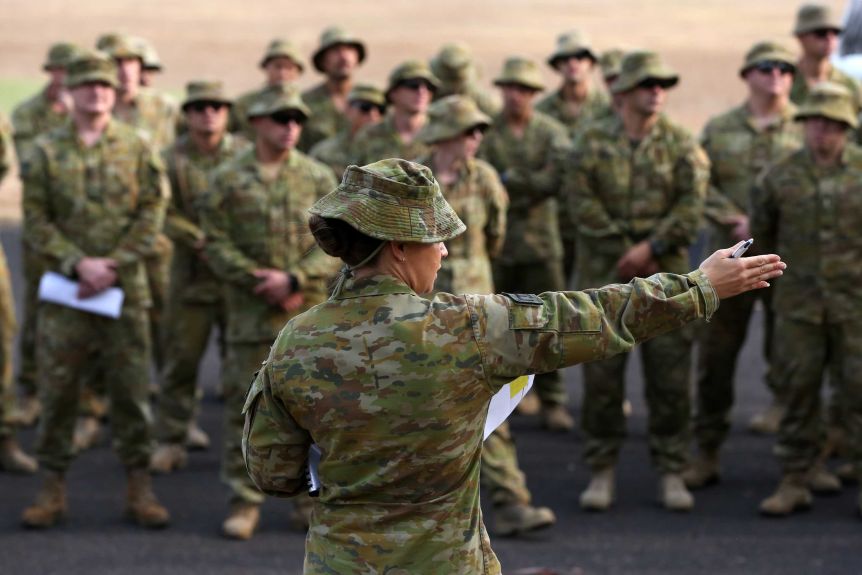The October 2020 Federal Budget: New infrastructure opportunities – and how to achieve them
The Federal Government has just announced its new budget for 2020 - 2021.
Australia’s deficit is expected to reach $213.7 billion with a net debt of $703 billion as the Government funnels more funds into infrastructure, defence, and health amid the worst economic crisis since the Great Depression.
As part of the COVID-19 Recovery Plan, the Government is working towards “a safer and stronger Australia” by investing more in the Australian Defence Force and miscellaneous infrastructure projects in the Southwest Pacific, including a joint project between Australia and the Solomon Islands.
The plan is to provide tax relief for all Australians, stimulate the economy, and ease the financial strain caused by COVID-19. So how can your business cash in on this generous new budget? What is required to become a supplier for government projects?
In this article, we explain where the new budget is going, and what you need to achieve to benefit from it.
What you need to know about the Australian Defence Force budget

Image: ABC
Over the next 12 months, the Federal Government will be supporting and boosting the Australian Defence Force by:
- Implementing the 2020 Defence Strategic Update and 2020 Force Structure Plan. This is a 10-year funding model with a 20-year outlook. Around $575 billion will be funneled into the plan over the next decade to ensure important defence development goals are achieved.
- Upgrading the capability and potency of the Australian Defence Force. The Morrison Government will invest $270 billion over the next 10 years to a) ensure we have long-range attack capabilities; b) have better awareness over the land and sea; c) secure supply chains for self-reliance in the ADF; and d) create more jobs through ADF related infrastructure e.g. building seaports, wharves, and facilities.
- Creating the 2020 Cyber Security Strategy. This new strategy aims to arm Australia against malicious cybersecurity threats and expand the cybersecurity task force. Around $1.7 billion will be invested in this strategy and 500 new jobs will be created.
- Funding defence innovation, industry grants, skilling and micro-credentialing, and cyber training for defence industry. Around $1 billion will be invested into upskilling members of the defence force.
- Streamlining the Reservist call out process for Operation COVID-19 ASSIST. The Government plans to increase the number of Reserve days for Reservists and recruit an additional 500 Reservists to provide more employment opportunities for Australians impacted by the COVID‑19 pandemic.
While it might seem most of the budget is being allocated amongst the Australian Defence Force, there are a number of large infrastructure projects in the works, too.
The ADF cannot function at full capacity without up-to-date geo-mapping, state of the art facilities, ports, supplies, and more. This new funding will fast track multiple projects and thousands of new jobs for Australians – it’s a win-win situation for all involved.
What you need to know about the COVID-19 Infrastructure Package


Image: Unsplash
As part of the Federal Government’s JobMaker Scheme, the Federal Government is also aiming to increase the infrastructure investment pipeline by $10 billion to $110 billion over ten years. This is called the COVID-19 Infrastructure Package. It aims to provide significant near‑term investments in major road and rail projects, road safety, and community infrastructure.
In line with the COVID-19 Infrastructure Package, the Morrison Government has invested $7.5 billion into road and rail projects across Australia. These include:
New South Wales:
- $603 million for the Singleton Bypass on the New England Highway and Bolivia Hill Upgrade
- $360 million for the Newcastle Inner City Bypass between Rankin Park and Jesmond
- $120 million for the Prospect Highway Upgrade
- $491 million for the Coffs Harbour Bypass.
Victoria:
- $320 million for the Shepparton Rail Line Upgrade
- $208 million for Stage 2 of the Warrnambool Rail Line Upgrade
- $292 million for the Barwon Heads Road Upgrade
- $85 million to upgrade Hall Road in Cranbourne
- Work on Stages 2 and 3 of the South Geelong to Waurn Ponds Rail Upgrade will also be accelerated with $605 million brought forward into the forward estimates.
Queensland:
- $750 million for Stage 1 of the Coomera Connector (Coomera to Nerang)
- $112 million for the Centenary Bridge Upgrade in Brisbane
- $76 million for Stage 2 of the Riverway Drive Upgrade between Allambie Lane and Dunlop Street in Townsville
- $42 million for the Mt Lindesay Highway Upgrade between Johanna Street and South Street in Jimboomba.
Western Australia:
- $227 million for METRONET — High Capacity Signalling and Morley Ellenbrook Line
- $87.5 million for the Reid Highway Interchange with West Swan Road in Western Australia.
South Australia:
- $200 million for the Hahndorf Township Improvements and Access Upgrade
- $136 million for Stage 2 of the Main South Road Duplication between Aldinga and Sellicks Beach
- $100 million for the Strzelecki Track Upgrade.
Tasmania:
- $150 million for the Midway Point Causeway (including McGees Bridge) and Sorell Causeway as part of the Hobart to Sorell Roads of Strategic Importance corridor
- $65 million to upgrade the Tasman Bridge.
Northern Territory:
- $120 million to upgrade the Carpentaria Highway
- $46.6 million for National Network Highway Upgrades across the Territory.
Australian Capital Territory:
- $87.5 million for the Molonglo River Bridge
- $50 million for a South West Corridor upgrade package.
The Federal Government has also announced some other big-ticket items for the budget:
- $249.6 million over four years to modernise recycling infrastructure, reduce waste and recycle more within Australia
- $124.3 million for the Pacific Step-Up Program (a joint Australia-Solomon Islands project to construct a border and patrol boat outpost in Solomon Islands’ western provinces)
- $50 million to help farmers upgrade their on‑farm water infrastructure
- $4.5 billion in upgrades to the National Broadband Network to build water infrastructure Australia-wide
- $2 billion for the National Water Infrastructure Development Fund
- $1.5 billion for a new manufacturing strategy
These projects are relevant to a wide range of industries including manufacturing, engineering, transport, and logistics. There is work to be done and hundreds of thousands of dollars – even millions – to be made.
So what do you need to do to win a government contract?
Triple certification will increase your chances of winning a Federal Government contract


Image: Pexels
In order to procure funding from the Federal Government, your business will need to stand out from the competition. One of the most effective ways to prove your worth and reliability is to achieve triple certification.
In most cases, triple certification will be expected, if not required, to be considered for the contract. You need to show your commitment to safety, quality, and the environment.
The three certifications you may need include:
- ISO 45001: Occupational Health and Safety Management Certification (AS/NZS 4801 is also acceptable in Australia)
- ISO 14001: Environmental Management Systems
- ISO 9001: Quality Management Systems
With these certifications combined, you will ensure your clients experience consistent, good quality products and services. You will stand out from competitors with ease and open the door to incredible funding opportunities and projects.
At QMS, we’re here to make the certification process simpler and more streamlined.
Contact us today – we offer certification services for the Australian Defence Force, the construction and engineering industries, manufacturing, and transport and logistics sectors.
Feature Image: Unsplash

